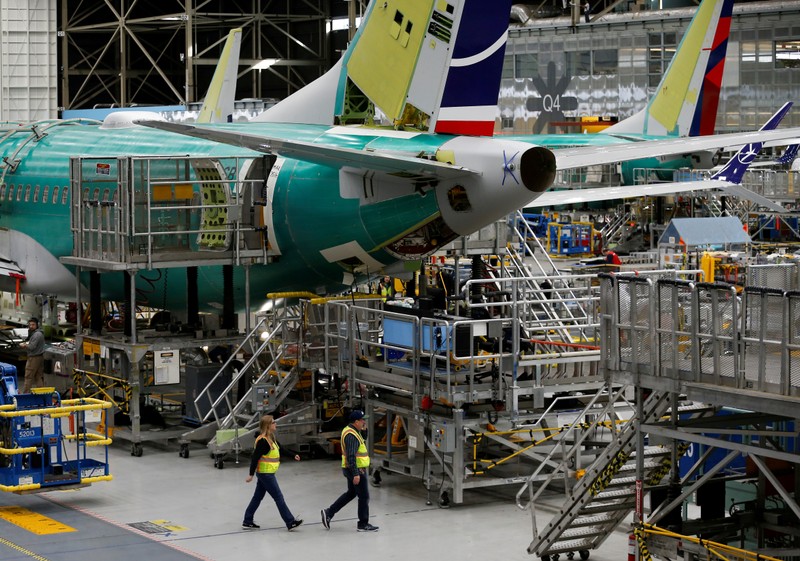
FILE PHOTO: Employees walk by the end of a 737 Max aircraft at the Boeing factory in Renton, Washington, U.S., March 27, 2019. REUTERS/Lindsey Wasson/File Photo
June 26, 2019
By David Shepardson
WASHINGTON (Reuters) – The U.S. Federal Aviation Administration has identified a new potential risk that Boeing Co must address on its 737 MAX before the grounded jet can return to service, the agency told Reuters on Wednesday.
The risk was discovered during a simulator test last week, sources with knowledge of the matter told Reuters.
The new issue means Boeing will not conduct a certification test flight until July 8 at the earliest, the sources said, and the FAA will spend at least two to three weeks reviewing the results before deciding whether to return the plane to service.
Last month, FAA representatives told members of the aviation industry that approval of the 737 MAX jets could happen as early as late June.
The world’s largest planemaker has been working on the upgrade for a stall-prevention system known as MCAS since a Lion Air crash in Indonesia in October, when pilots were believed to have lost a tug of war with software that repeatedly pushed the nose down.
Boeing’s top-selling 737 MAX was grounded worldwide after a second deadly crash in March in Ethiopia which also involved MCAS. The two accidents combined killed 346 people.
“On the most recent issue, the FAA’s process is designed to discover and highlight potential risks. The FAA recently found a potential risk that Boeing must mitigate,” the FAA said in the statement emailed to Reuters.
Asked about the new potential risk, Boeing said it is “working closely with the FAA to safely return the MAX to service.”
Two people briefed on the matter told Reuters that an FAA test pilot during a simulator test last week was running scenarios seeking to intentionally activate the MCAS stall-prevention system. During one activation it took an extended period to recover the stabilizer trim system that is used to control the aircraft, the people said.
It was not clear if the situation can be addressed with a software update or if it is a microprocessor issue, but Boeing has told the FAA it believes the issue can be addressed with a software upgrade.
A hardware fix could add new delays to the plane’s return to service.
(Reporting by David Shepardson in Washington; Writing by Tracy Rucinski; Editing by Phil Berlowitz and Matthew Lewis)

